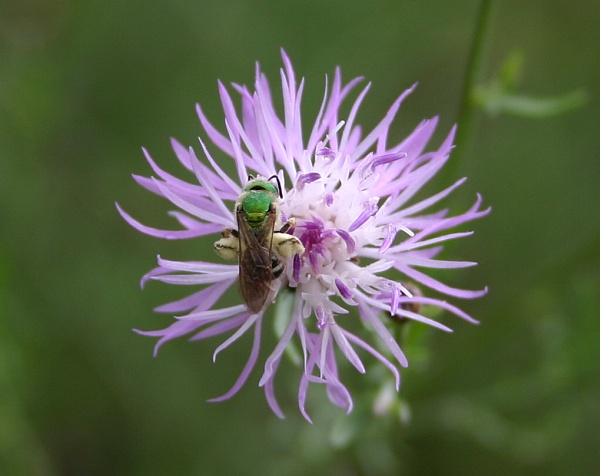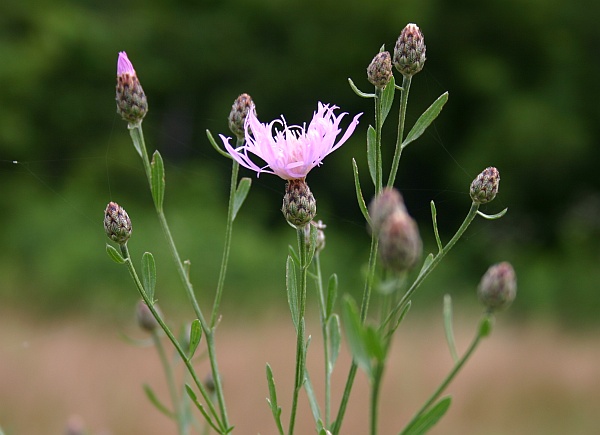
Close looks reveal new wonders.
Until recently I had no idea that metallic green bees existed. Then I saw one on a chicory flower in Schenley Park and that started the ball rolling.
Soon I found another one, this time on spotted knapweed on the Montour Run bike trail. She’s a beautiful green color with huge yellow pollen sacks on her legs. (I don’t know the sex of this bug; just guessing.)
My searches on the web indicate she’s one of 11 species of Agapostemon sweat bees, bugs of the western hemisphere. If I had known what to look for I could have used this guide at Discover Life to identify her species.
Though sweat bees are sometimes attracted to sweat, the bees I found were only interested in flowers, especially blue and violet flowers like spotted knapweed.
Spotted knapweed (Centaurea maculosa) has a pretty flower but it’s an invasive species that’s consumed 7 million acres of North America. It gains a foothold in disturbed soil, then spreads through high seed production, toxins in its roots that inhibit other plants, and an unpalatable taste that prevents deer and other animals from eating it (alas!).
It’s identified by its distinctive thistle-like flower head with black-fringed bracts.

Spotted knapweed is blooming everywhere right now.
Look closely and you might find a native metallic green bee taking a sip.
p.s. Check the comments for a link to a cool close-up by Mike Vosburg!
(photos by Kate St. John)
Cool photos! What a cooperative bee! I just saw one of these guys a week or two ago in Schenley Plaza. Had a hard time getting them to settle long enough to take a picture with my phone. I’ve seen four to five different species of bees in the flowers along Forbes most days lately. It’s been interesting to me to watch them move from day to day from garden to garden as each type of flower must reach it’s peak.
Here’s a shot I got of one last summer:
http://www.flickr.com/photos/vosphotography/7725027926/
We have piles of that troublesome knapp weed; grabs your ankles when you walk through a field. But I’ll have to look closer for the bees.